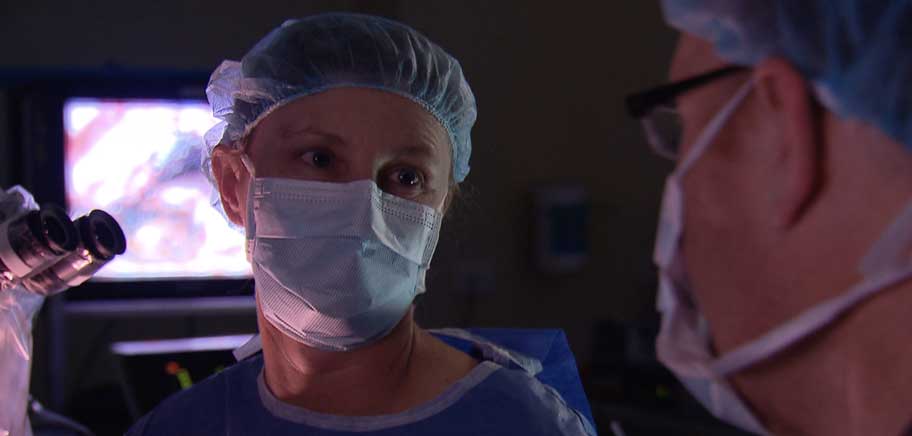Brain Tumour Awareness Month 2020: Prof Kate Drummond
Neurosurgeon Professor Kate Drummond says all brain cancer patients want more time. “There is always a wedding, a baby, an event or someone that needs to be cared for,” she says. But with the most serious form of brain cancer, glioblastoma multiforme or GBM, time runs out too quickly – despite the greatest efforts of oncologists and highly skilled surgeons. Kate says there are around 1000 Australians diagnosed every year with GBM and most survive an average of just 15 months. “The reality is that for these patients, not much has changed since 2005,” she admits. “My hope is that by 2030, we will have something else. It may not be a magic bullet, but we might have a series of smaller “wins” that when working together in combination may change outcomes. There is so much research going on and patients should have hope that teams are working tirelessly around the world to try and make a difference.”
To mark Brain Tumour Awareness Month 2020, Kate shared some of her thoughts.
“I particularly recall on patient, a really lovely man aged just 60, who was away on the trip of a lifetime with his wife, travelling overseas. He started to feel ‘not quite right’ and was becoming a bit confused. He put it down to stress, but they went off for a CT scan overseas. The results from that prompted them to return home for an MRI scan. It revealed he has a glioblastoma, the most serious form of brain cancer. And in this case, it was not in one just spot. We found he has one of the unusual tumours that has travelled a throughout the brain. We will treat it to hold it off for a while, but because it is not localised, it’s almost untreatable. If he lived more than one year, it would be a miracle.
I am a doctor and yes, this is all part of our work, but I do feel for him, his family and all of my patients who face this diagnosis. Sixty is a time in your life when you should be finally starting to ‘breathe out’ a bit.
Something like this can happen to anyone. Glioblastoma is the most serious form of brain cancer and it is most common in those aged over 45. It can occur in children, but it is not the commonest type of brain tumour in kids.
It is an awful disease that seems to happen when people are in their prime, or have just paid off the house, are moving into retirement or semi-retirement and think they are about to embark on a caravan adventure around Australia, or some other long-held dream.
I also feel so much for a 77-year-old patient with her first ever seizure. When we investigated, we found that her tumour had spread everywhere. Because it is so extensive, this lady will go straight to palliative care.
The data in Australia does suggest GBMs are becoming a bit more common, but people are living longer and are not dying of other diseases. So it’s hard to know if this is a real increase.
Are we doing enough? Yes and no. The reality is that since 2005, not much has changed for brain cancer patients. There have been small wins – surgery is better and safer and we are more aggressive in our management. Our understanding of quality of life is better. But there have been few new treatments made available.
Having said that, there has been explosion of how we understand cancer in general, what causes it and what drives it. That information is critical and for some cancers, like melanoma, it has led to a revolution. Understanding a single gene led to a revolution in haematological cancers. Understanding the B-RAF mutation led to a revolution in melanoma treatment. My hope is that we will see the same sort of breakthrough in brain cancer.
Brain cancer is an under-funded and under-studied cancer. It is rare by cancer standards, although it does disproportionally cause death and disability. Breast cancer is much more common, but fewer people die from the disease.
We do now know more about where brain cancer grows, why it grows and what the important mutations are, but we have not found that magic bullet yet.
People who are diagnosed should be hopeful that we are making progress, and we are understanding more about how we can do clinical trials better. There are lots of smarter things on the horizon, which make me hopeful.
I am driven by the patients I see every day. People always want more time. There is always a grandchild to be born, or a wedding to go to or a partner to care for. There is always more life. There’s rarely a time when people go, ‘that’s enough’. And that’s why as medical professionals we have to keep finding answers, keep researching and try to give people the ‘more’ that they want.”
For more on what drives Professor Drummond, please click here.
May 2020.

